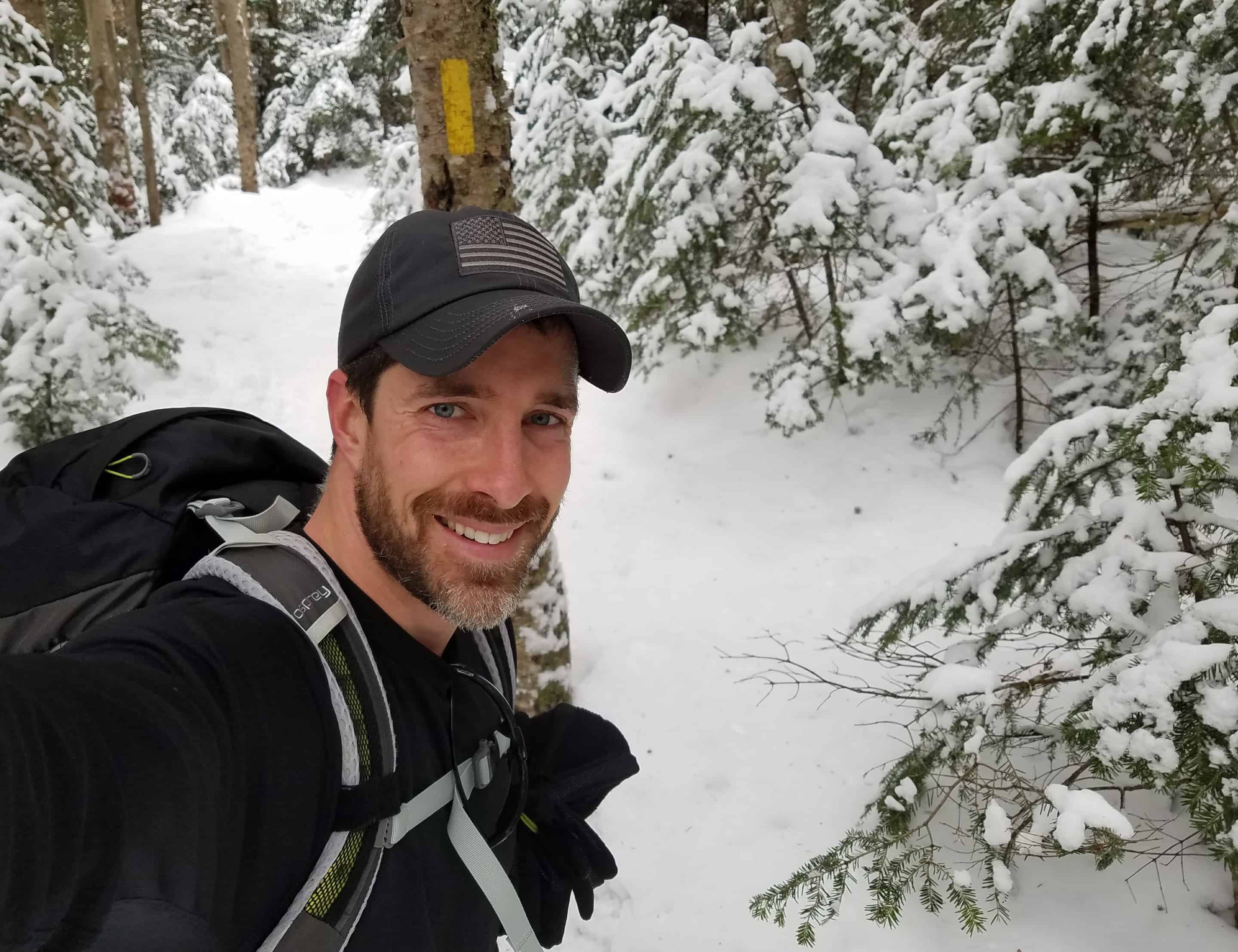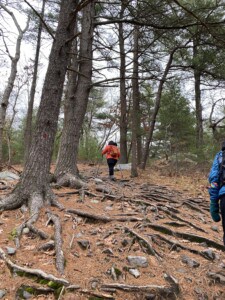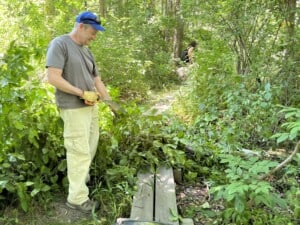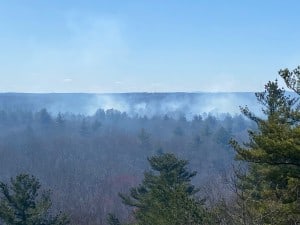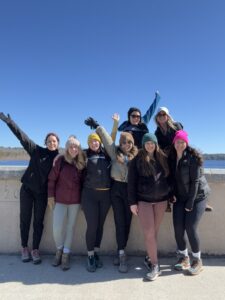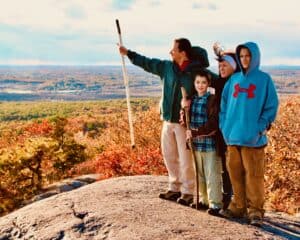By Rick Cushing
Rick Cushing is one of the early finishers of the 125-Mile Club, the challenge to explore all 125 miles in the Blue Hills. Rick has hiked in all sorts of weather and has a few suggestions for you if you’re thinking of hiking this winter.
A few things that have worked well for me winter hiking in the mountains throughout the northeast, include:
- Carry different gloves / mittens for the ascent vs. up at higher elevations. You generate a lot of heat while climbing, so having a thin liner glove on the ascent is helpful. Being able to switch into a more substantial glove (or mittens) up at higher elevations is helpful when temps drop and your body’s heat output decreases.
- Activate your handwarmers in the car before you start, if temperatures are cold enough that you anticipate needing hand warmers. They take upwards of 20+ minutes to reach full temp, so popping them into a pair of mittens at the car is key. Then, when you get to a high elevation and need the mittens for re-warming cold hands, they’re already toasty warm. I learned this the hard way several winters ago on the summit of Mt. Cabot in NH. If you wait until your hands are cold and have lost dexterity, even opening a pack of hand warmers is nearly impossible let alone being able to pull gloves/mittens back onto your hands with stiff fingers. Take care of this precaution in advance so that you have a warm pair of mittens in your pack ready to go in case your hands have cooled down and need re-warming.
- Switch to wide mouth bottles in winter helps (ex: Nalgene 30oz). I store 2 of them upside down in my pack (since water will freeze from the top-down). This ensures that the mouth of the bottle remains ice-free in the case where the water has cooled down enough to begin freezing. The one bottle I actively drink from is stored in an insulating sleeve clipped to the outside of my pack (or belt loop) for quick access while on the move. I’ve never had issues with that bottle freezing (while in the insulating sleeve), even when temps are below zero.
- Pay constant attention to your body heat while on the ascent. A perfectly layered winter hike will result in little-to-no sweating. If you dress too warm, you’ll end up sweating and getting cold when you stop and cool down (which could also be life threatening in the case of an injury). Stopping often to remove layers when you first detect yourself overheating is key. I often wear only a single base layer and no hat when on an ascent. As I get higher and the temperature decreases and/or the incline lessens, I will re-add layers as needed. Knowing when to remove (or add) layers is key.
And lastly, enjoy hiking in the Blue Hills… all year round!
See even more tips on hiking in the winter.

Rick Cushing lives in Norwood with his wife and two children, and enjoys hiking, trail running, and mountain biking. Rick has been visiting the Blue Hills for the past 15 years, but had only previously explored roughly 65% of the trails until 2021 when he discovered (and completed) the Blue Hills 125 Mile Club challenge. Rick hikes during all 4 seasons, and spends most of his trail time exploring the high peaks throughout the Northeastern states. Some of Rick’s hiking milestones include completion of the New Hampshire 48 4,000 Footers in 2018, New England 67 4,000 Footers in 2019, New England 100 Highest Mountains in 2020, and the Adirondack 46 High Peaks (which also completed the Northeast 111 4,000 Footers list) in 2021. Rick is currently midway through hiking the Catskills 3500 Club list of peaks, which he plans to finish in the spring of 2022 prior to returning to New Hampshire to focus on the Terrifying 25 and 52 With a View hiking lists.

